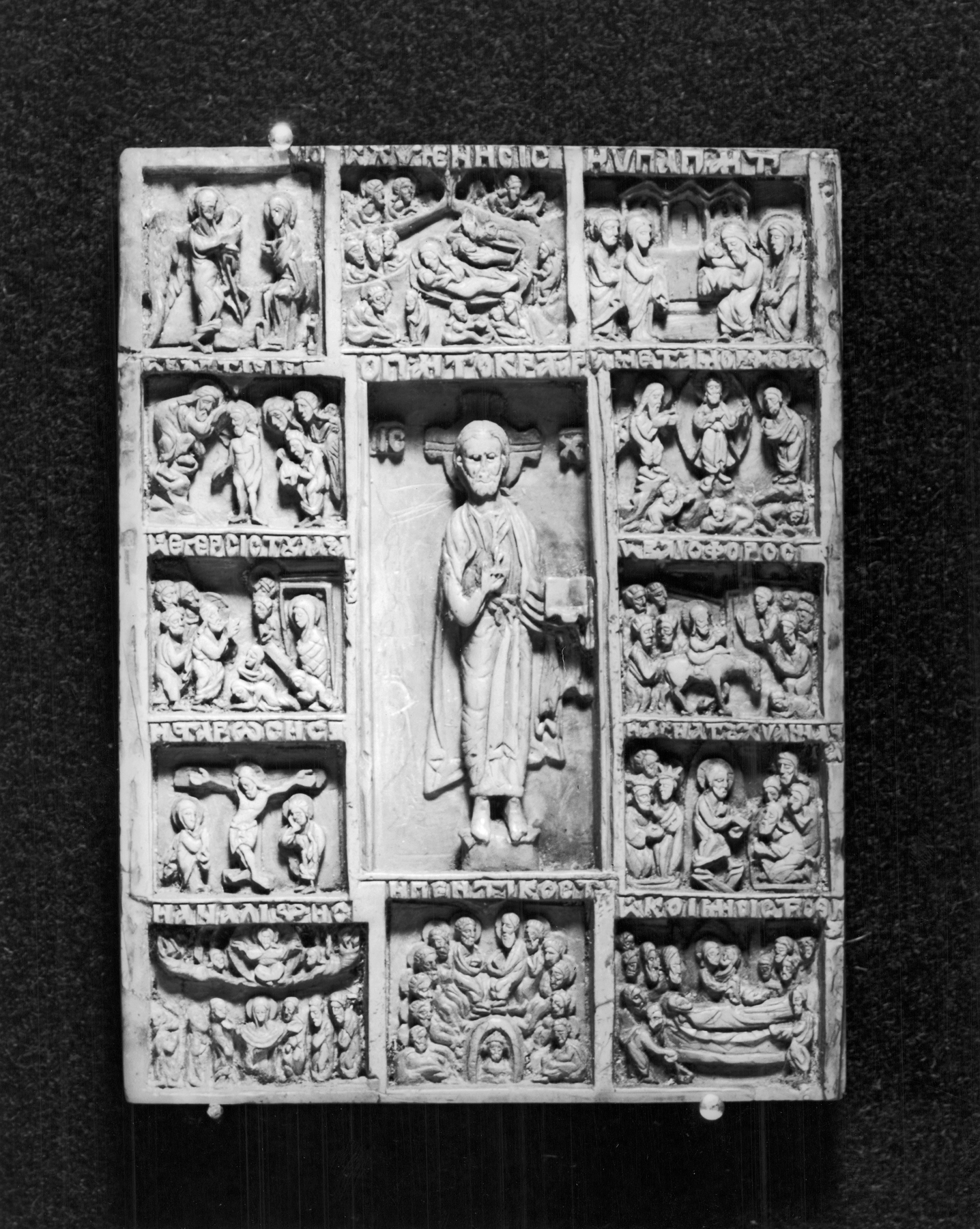Christ and the Cycle of Twelve Feasts
(Byzantium and Early Russia)
This icon shows a central figure of Christ identified by an inscription as "Pantokrator," Greek for "almighty." He is surrounded by twelve scenes representing the major feasts of the Orthodox Church (clockwise, from the upper left): the Annunciation, Nativity, Presentation in the Temple, Baptism, Transfiguration, Raising of Lazarus, Entry into Jerusalem, Crucifixion, Resurrection, Ascension, Pentecost, and Dormition (Death) of the Virgin.
Provenance
Provenance (from the French provenir, 'to come from/forth') is the chronology of the ownership, custody, or location of a historical object. Learn more about provenance at the Walters.
Dikran Kelekian, New York and Paris, by purchase; Henry Walters, Baltimore, [date of acquisition unknown], by purchase; Walters Art Museum, 1931, by bequest.
Exhibitions
| 1947 | Early Christian and Byzantine Art. Baltimore Museum of Art, Baltimore. |
Geographies
Byzantine Empire (Place of Origin)
Measurements
2 15/16 x 2 3/16 x 3/8 in. (7.5 x 5.6 x 1 cm)
Credit Line
Acquired by Henry Walters
Location in Museum
Centre Street: Third Floor: Byzantine, Russian, and Ethiopian Icons
Accession Number
In libraries, galleries, museums, and archives, an accession number is a unique identifier assigned to each object in the collection.
In libraries, galleries, museums, and archives, an accession number is a unique identifier assigned to each object in the collection.
41.210


